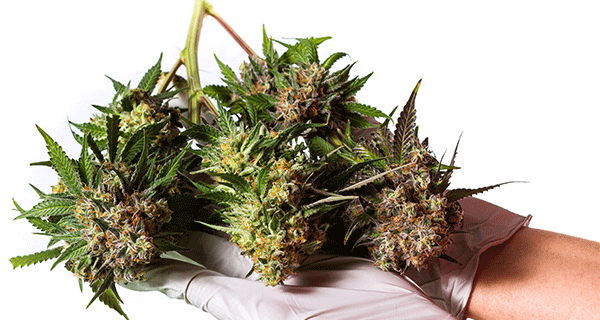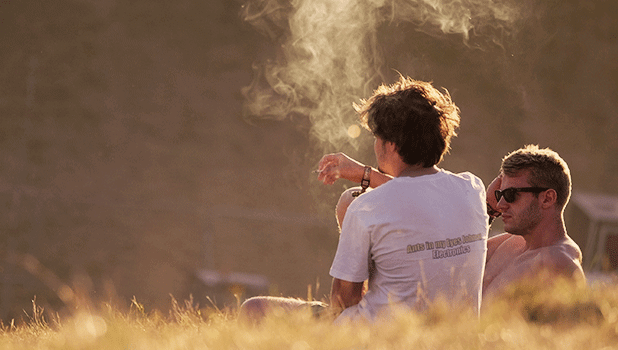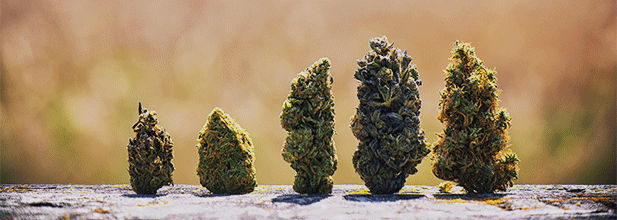How To Choose The Best Cannabis Strain To Grow
Published :
Sep 13, 2019
Categories :
Cannabis cultivation
• Strain information

Choosing a cannabis strain is the most crucial, and arguably the most difficult, decision to make before initiating a grow. There are thousands of varieties, and many of them possess completely different qualities. It’s not a matter of which is the best strain to grow; it’s more a case of which cultivar meets your personal demands and preferences.
Various factors will naturally influence the outcome of your decision, including desired effects, growing limitations, and your experience as a cultivator. Do you want to pour all of your efforts into a crop that provides a stoning sensation, or one that will liven you up? Do you have a ton of space indoors or out, or are you working with a modified closet? Have you been growing weed for ages now, or is this your first or second swing?
In this article, we’ll guide you through the most important aspects to consider when selecting which cannabis strain to grow, in hopes of making your choice a little easier.
SPACE OF YOUR GROWING ENVIRONMENT VS. SIZE OF YOUR STRAIN
Before selecting a strain to cultivate, it’s vital to take a good look at your growing environment. Spaces will vary significantly between growers. Some have the luxury of a large greenhouse or outdoor space where they can choose to raise plants in a field or garden. Others are limited to small indoor spaces such as grow rooms, cupboards, or even computer towers.
Every strain ascends to an estimated height. Size is primarily dictated by genetics, but environmental factors and training techniques can also make a big difference. Typically, sativa-dominant plants grow taller, display a larger distance between nodes, and are more suitable for outdoor cultivation. Some of these strains develop the appearance of trees and can climb to over 3m vertically. The harvests produced by these varieties are usually impressive, but plants take up a lot of space and resources.
In contrast, indica-dominant specimens have a bush-like appearance and range from approximately 80–160cm in height. They are largely suitable for indoor cultivation, and also present a viable opportunity for outdoor growers working with limited space.
Autoflowering strains are a third option. These versatile varieties grow to between 50–100cm in height and can be raised indoors in the smallest of cavities. Outdoor growers also utilise these botanical dwarfs to keep their crop out of sight.

A NOTE ON SPEED
Speed of growth is another consideration that falls into the above category, as it dictates how long you will need to utilise your grow space. Some cultivars have been selectively bred to bloom over a short time frame, whereas others take much longer. Strains that are faster to yield are preferred by commercial operations and growers seeking discretion.
If you’re looking for speed, then an autoflowering strain is your best bet. On average, they erupt from seed into a fully flowered plant that’s ready to harvest in 8–10 weeks. This is especially valuable for those growing in less-than-ideal climates outdoors, or those looking to get in and get out during sweltering summer grows indoors.
GROWING EXPERIENCE
Apart from the occasional green-fingered prodigy, it takes some time to learn the ropes of cultivation. Trial and error are the best gurus, and it will take several seasons to learn what works best for you. Many seedbanks provide a difficulty rating for each cultivar they offer, or provide advice on how to best tame certain strains. Novices and first-time growers should keep this in mind when choosing seeds. Doing so will save a lot of time, effort, and heartbreak. Strains given an “easy” rating are hardy varieties that can take some abuse and will easily recover from common beginner errors. These simple-to-grow varieties are no less impressive than the more fickle specimens; they’re usually just more stable.
Here too, novices often find success growing autoflowering varieties. Their small size makes them easy to manage and their durability makes them hard to kill. Compared to photoperiod strains, autos don’t require a shift in the light cycle to begin flowering. This trait removes one of many tasks from the novice’s list of things to do.
With experience comes reward. Advanced growers earn their ability to crop whatever strains they please through the process of experimentation and learning. Knowledge of different growing and training methods, environmental factors, and advanced techniques allows them to tame the most difficult of varieties.
WHAT TYPE OF EFFECT DO YOU PREFER?
The effect of your strain is paramount to the selection process. But of course, you already knew that. If your harvest gets you more stoned than you’d like or is too stimulating for your taste, then you’ve wasted a lot of time. But how will you know the effects of a strain before trying it? If you’re lucky enough to have access to cannabis dispensaries or coffeeshops, then go and try some bud before you grow. Otherwise, seedbanks provide in-depth reviews of the strains they sell. These breakdowns detail everything from THC content to terpene profile.
Before growing weed, it’s best to experiment with smoking or vaping different strains to determine the kind of effect you prefer. Indica-dominant strains tend to provide a stoning body high with sedating qualities. These strains are best enjoyed at home in the evenings when it’s time to “bliss out”. In contrast, sativa-dominant varieties exert stimulating effects that can be enjoyed all day long to enhance focus and productivity.
The divide between these two cannabis subspecies isn’t so black and white. Breeding programmes have merged these genetics over and over, causing many modern hybrids to contain varying ratios of indica and sativa. Some strains even feature a perfect 50-50 split and offer the best of both worlds.
Moreover, some cultivars have been selectively bred to produce high levels of THC, whereas other strains focus predominantly on CBD. For those always chasing higher highs, it’s not uncommon to find strains capable of delivering 25%+ THC. Regarding CBD, there are now strains that feature high levels of the therapeutic cannabinoid with almost 0% THC. This means that those who choose not to get high can still enjoy some of the physiological effects of cannabis, as well as its aroma and taste. Which brings us to…

AROMA AND TASTE MATTER
Cannabis buds don’t all taste amazing by default. It takes work on the grower’s part to properly dry and cure flowers to create a smooth smoking experience. But every strain has its own unique terpene profile. Terpenes are aromatic molecules that offer different scents and tastes. In nature, plants produce these chemicals to defend themselves against insects and pests, among other functions.
Over 100 of these molecules have been discovered in the cannabis plant. Limonene contributes strong scents of citrus, caryophyllene provides tastes of spice and black pepper, and myrcene offers hints of earth and cloves.
If you were to enter a dispensary and take a whiff of every jar on the shelf, you’d notice both distinct and subtle differences between each. This is because each strain produces a different array of terpenes with varying top, middle, and base notes to suit.
Although it’s unlikely to be turned off by the taste of a cannabis strain, some definitely taste “better” than others. But it’s all subjective. Those with a sweet tooth should investigate strains like OG Bubble Gum and Choco Candy. Growers with a preference for fruity tastes should plant some Blueberry or Pineapple Express. And for the savoury sybarites out there, there’s White Cheese to satisfy the palate.
CONSIDER YOUR LOCAL CLIMATE
Climate can have a big impact on cannabis plants. Cultivars inherit genetics from the landrace strains used to create them. Autoflowering strains originally stem from the colder climates of Central and North Asia, and thus can more easily handle frigid environments and shorter growing seasons. Strains that originate from Jamaica and Thailand, on the other hand, have a higher tolerance for heat and are ideal if you live close to the equator.
Be sure that the strain you select is compatible with your local climate. If you choose to grow a large tropical sativa in a northern climate, you’ll only be disappointed. The same applies when attempting to grow a cold-adjusted strain in the desert and tropical environments.
WHEN ALL IS SAID AND DONE, IT’S TIME TO CHOOSE
Although the process of picking a strain can be stressful for the indecisive, at some point it’s best to just go with your gut and give some seeds a shot! While you shouldn’t pick a strain that’s obviously unsuitable for your environment, at the end of the day, you can pick whichever strain you want! And for those with the space, time, and resources, feel free to grow a couple different strains at the same time so you can compare results. Good luck on your search!







































